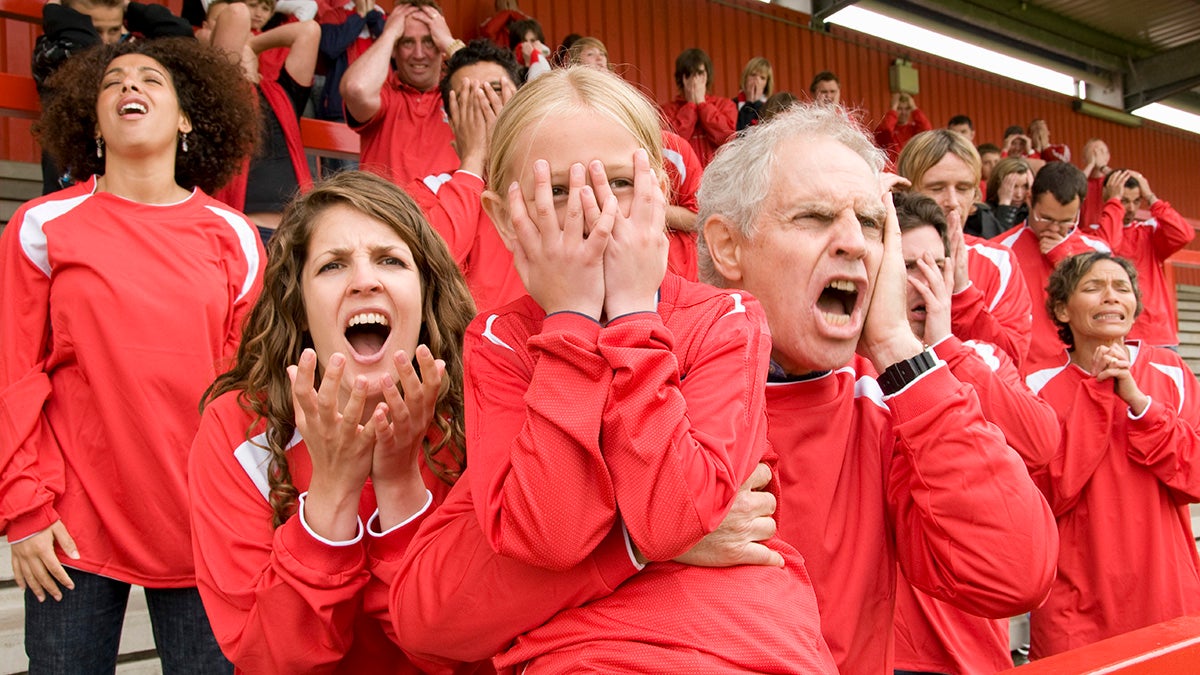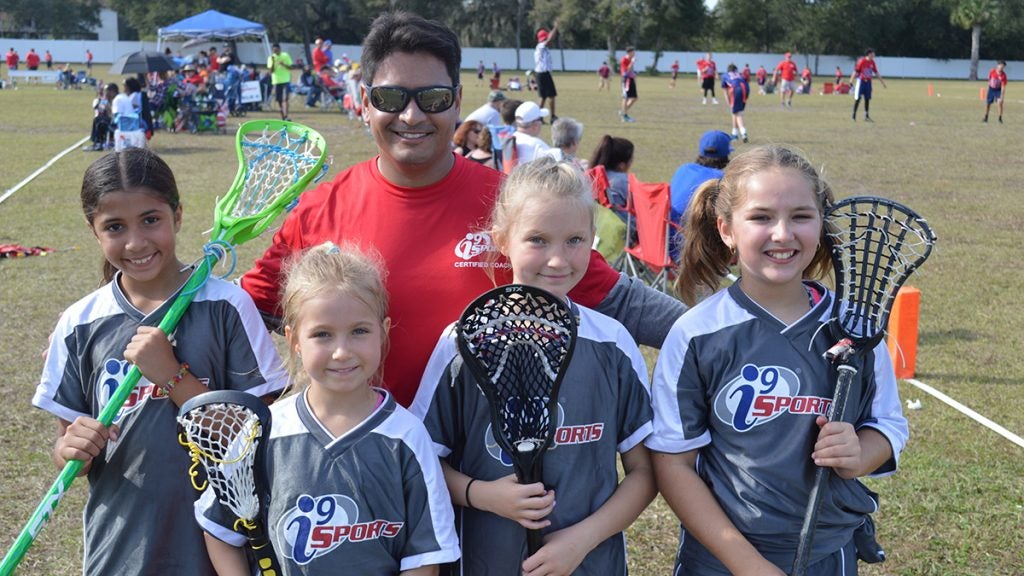Have parents ruined sports for kids?

Growing up in Scottsdale, Arizona, Arin Finger played sports almost year-round. He considers it an important part of his upbringing, despite a father who loudly berated referees and sometimes behaved boorishly at his games.
Mark Hyman coached his baseball-playing son, a promising young pitcher, into premature arm injury that required Tommy John surgery before he completed high school.
Both men now work toward reversing a youth athletic model that they see as flawed, Finger as director of a Phoenix-area youth sports franchise that emphasizes participation and development over competition and results; Hyman as a college professor and author who advocates for kids and warns against the dangers of unchecked pursuit of athletic dreams.
“What we have now is pretty much what parents want, because it feeds their emotional needs and sometimes their financial needs,” said Hyman, a professor of sports management at George Washington University in Washington, D.C., who has written three books about youth athletic culture.
“The reason is that what parents want and what kids tell us they want are very different,” Hyman said. “Parents enjoy competition and winning and something that looks like what they see on TV when they watch professional and college sports. And kids, when we ask them what they want, they want to have fun, they want to be with their friends, they want to learn new skills. So it’s a very different wish list for kids.”
Studies show that youth sports participation rates are declining, and more kids are dropping out at an early age due to injury, burnout, cost and access. According to the Aspen Institute’s Sports and Society program, 36.9 percent of children ages 6-12 played a team sport on a regular basis in 2016, compared to 38.6 percent in 2015. As recently as 2008, that number was 44.5 percent.
At the program’s September 2017 summit, officials announced a measure called Project Play 2020, an action plan to increase youth participation rates and to provide more fulfilling sports experiences. More than a dozen organizations in sports, media, health and retail are partners in the effort, among them Major League Baseball, the NBA, Nike, Target, NBC Sports, the U.S. Olympic Committee, the PGA Tour and the Johns Hopkins Global Obesity Prevention Center.
The program’s annual report identifies eight areas of emphasis but will focus on two initially: training coaches and sport sampling among youth. Fewer than one-third of youth coaches have been trained in areas such as general safety and injury prevention, and proper motivational techniques and sport-specific tactics, according to data compiled by the Sports and Fitness Industry Association (SFIA). Young athletes now play fewer than two sports per year, on average, according to SFIA data, the result of increased specialization and emphasis on competition and excellence.
“We went from a model that was recreational and participatory, and that has increasingly become competitive,” said Arizona State professor Eric Legg. “You’ve got more and more private sports organizations, private trainers, travel teams, elite level competition at younger ages.”
Legg studies youth sports and focuses on positive outcomes as part of ASU’s School of Community Resources and Development. He said that declining participation rates, young athlete specialization and the rising costs of competition and travel remove a tool that can bond communities.
“You’re losing this place where communities develop,” he said. “Not that they can’t develop in other places; they certainly can, but I think sport is a particularly powerful place to do that. You’re losing something that’s community based, that’s getting along with each other. It might be overly simplistic, perhaps, but I do think you’re losing something with a structure where you’re creating elites, and the haves and have-nots.”
Indeed, the gap is widening for youth participation (ages 6 to 12) in team sports, based on economics. According to SFIA data in the Aspen Institute study, the gap between kids from households earning less than $25,000 per year (41.3 percent) and those earning more than $100,000 per year (64.2 percent) was 23 percentage points in 2013. Just three years later, that gap had grown to 32 points, with only 34.6 percent of kids in lower-income households participating.
A 2014 study by another George Washington professor indicated that parents aren’t listening to kids when it comes to athletic participation. Amanda Visek surveyed 150 youngsters who played sports and asked them to rate 81 contributing factors to kids having fun. Winning ranked No. 48. Being a good sport, trying hard and positive coaching rated among the highest contributors.
“If you just wiped the slate clean,” Hyman said, “if you were able to start from scratch and re-engineer youth sports, but this time you began where the central premise was the emotional and developmental interest of kids, that was your priority, you would have something entirely different. The old model would be unrecognizable.”
Organizations beginning to push back against the growing trend have sprung up all over the country. The Positive Coaching Alliance (PCA) is a nationwide outfit whose motto is Better Athletes, Better People. Its Arizona chapter is headed by Rich Tomey, a former executive with both the NFL’s Cardinals and baseball’s Diamondbacks. The PCA provides online workshops and resources and has partnered with approximately 3,500 schools and youth sports organizations. Its coaches’ goals are to win, but more importantly to teach life lessons through sports. Its parents’ goal is to focus on a young athlete’s life lessons and to allow coaches and athletes the space to compete. Its athletes’ goals are personal, teammate and game improvement.
The National Alliance for Youth Sports (NAYS) is a Florida-based organization that works with thousands of athletic groups around the country, from parks and recreation departments, to Boys and Girls Clubs and independent groups. Founder and former CEO Fred Engh’s 1999 book, Why Johnny Hates Sports, was among the first to examine the growing commercialization and competitive emphasis on youth athletics. NAYS updated its National Standards for Youth Sports in 2017, with guidelines for coaches, volunteers and parents, and has more than 4,000 administrators worldwide who have gained Certified Youth Sports Administrator status.
“I think most parents want to do what’s right,” said the Aspen Institute’s Solomon. “A lot want off the treadmill, when they start to see how much it costs and how much travel there is for some programs, but they don’t know how. I don’t think many of them even know what questions to ask. If you don’t know what other options look like, you end up kind of going along with the crowd. They think, ‘If I don’t keep up, little Johnny is going to fall behind.’ We’re trying to educate people and give them more information.”

When Finger relocated back to the Phoenix area from southern California almost five years ago, he researched jobs as well as athletic programs for his young boys. He settled on i9 Sports, a Florida-based organization that awards franchises around the country and has more than a million participants, ages 3 to 14. The program is geared toward participation and skill development. There are no tryouts, and everybody registered plays roughly equal time. Games are once a week, usually on weekends, and practices are staged before games, lightening the load on both parents and kids.
“It was all about competition and winning for me, so I thought this model had some good values,” said Finger, a program director who oversees a dozen i9 sites throughout the Phoenix area. “I thought what they were trying to do would speak louder to a lot of the kids, just based on my prior experiences growing up.”
Finger estimated that i9 serves 1,800-1,900 kids per season, with a dropoff in the summer due to the heat. Parents are required to sign a code of conduct and encouraged to provide positive feedback to all kids. He understands that some kids will want further instruction and will be more advanced athletically, so he plans to reach out to other programs and youth coaches.
“I’m hoping that it can be more of a collaboration,” he said, “and not an us versus them approach.”
Finger aims to head off what Hyman experienced first-hand. Before he became a college professor and researcher, he was a sports writer who had chronicled young athlete burnout and overuse injuries. But in the early 2000s, his son was an exceptional youth league pitcher. The more he threw, the more opportunities he had to throw.
“I didn’t do a very good job of protecting him,” Hyman said. “I had a lot of fun watching him pitch.”
Hyman’s son developed arm trouble in high school and eventually underwent Tommy John surgery. He recovered well enough that he went on to play club baseball at George Washington, and in rec leagues after college. Hyman wrote about him in one of his books, he said, both as therapy and a cautionary tale.
“I don’t think I’m a crazy parent,” Hyman said. “I think I’m a typical parent who got caught up in the excitement of seeing their kid succeed at sports. I think there’s a lesson there about supporting your children in sports, but also setting limits and understanding that it’s not about how many games your kid’s winning or how many strikeouts they get. Your job as a parent is to support them and to help them be the best they can be, to help them reach their potential, whatever that may be.”
Dave Fairbank is a freelance writer who spent almost 31 years at the Newport News (Va.) Daily Press, where he won numerous Virginia Press Association and APSE awards.

